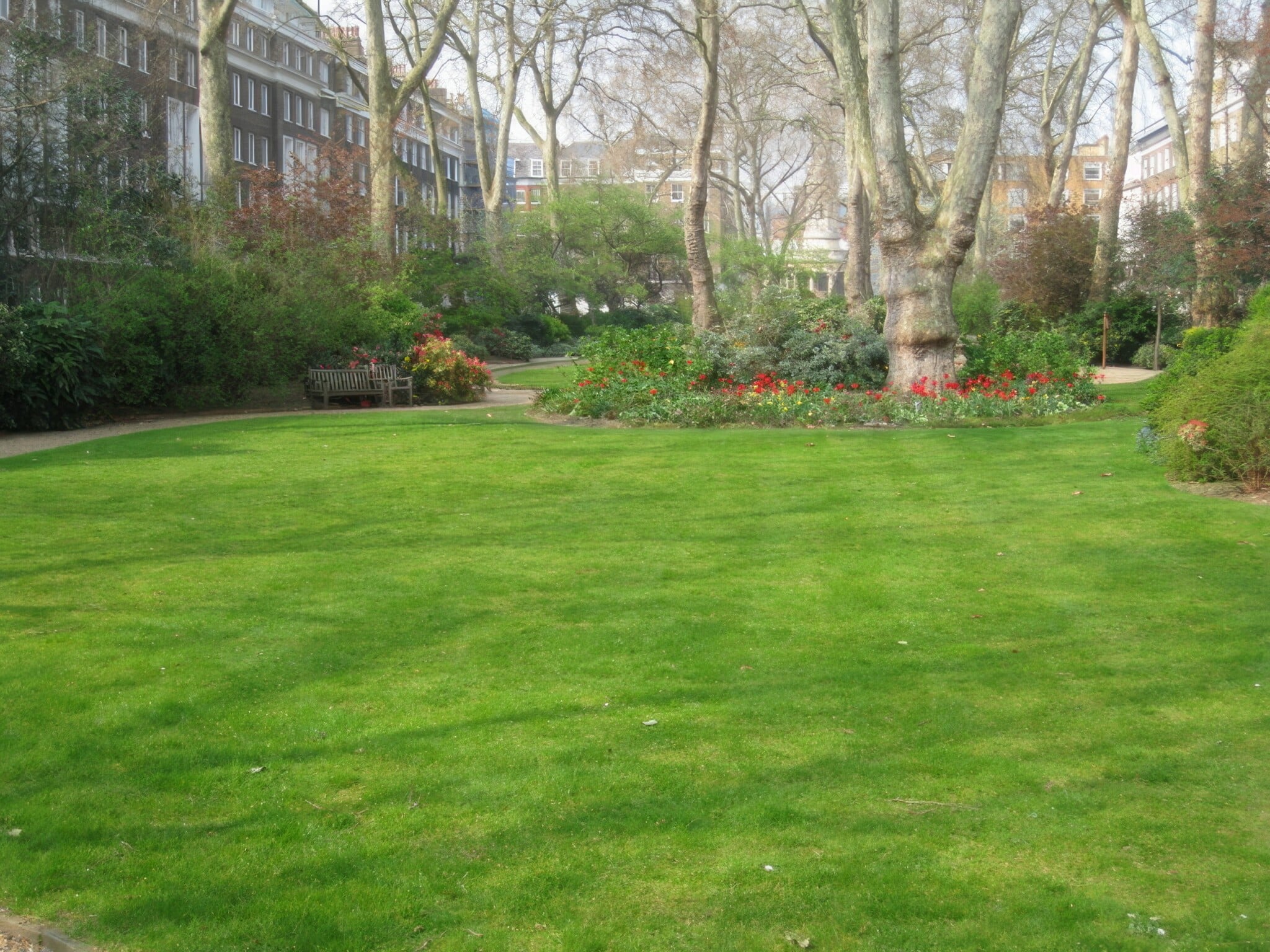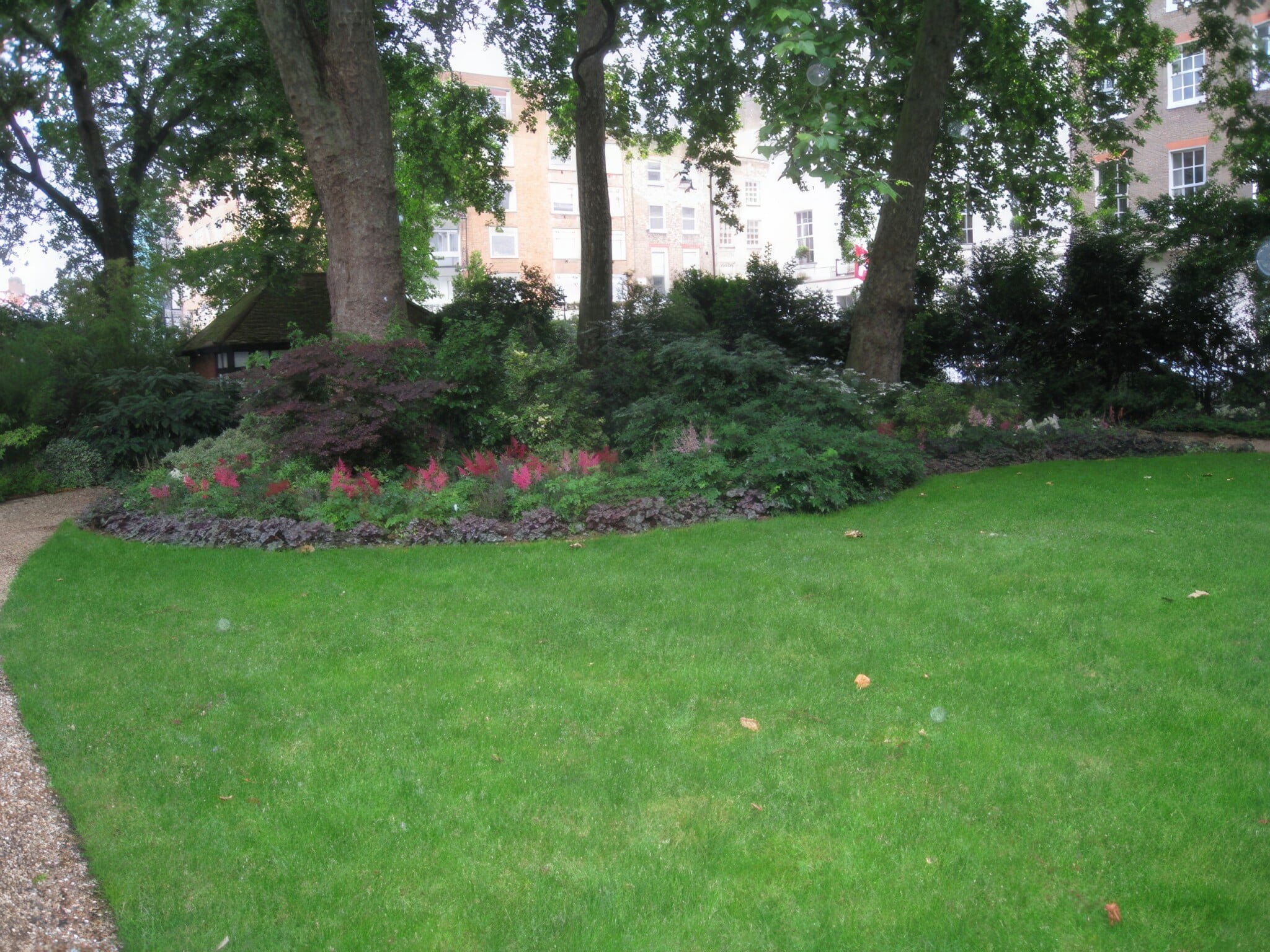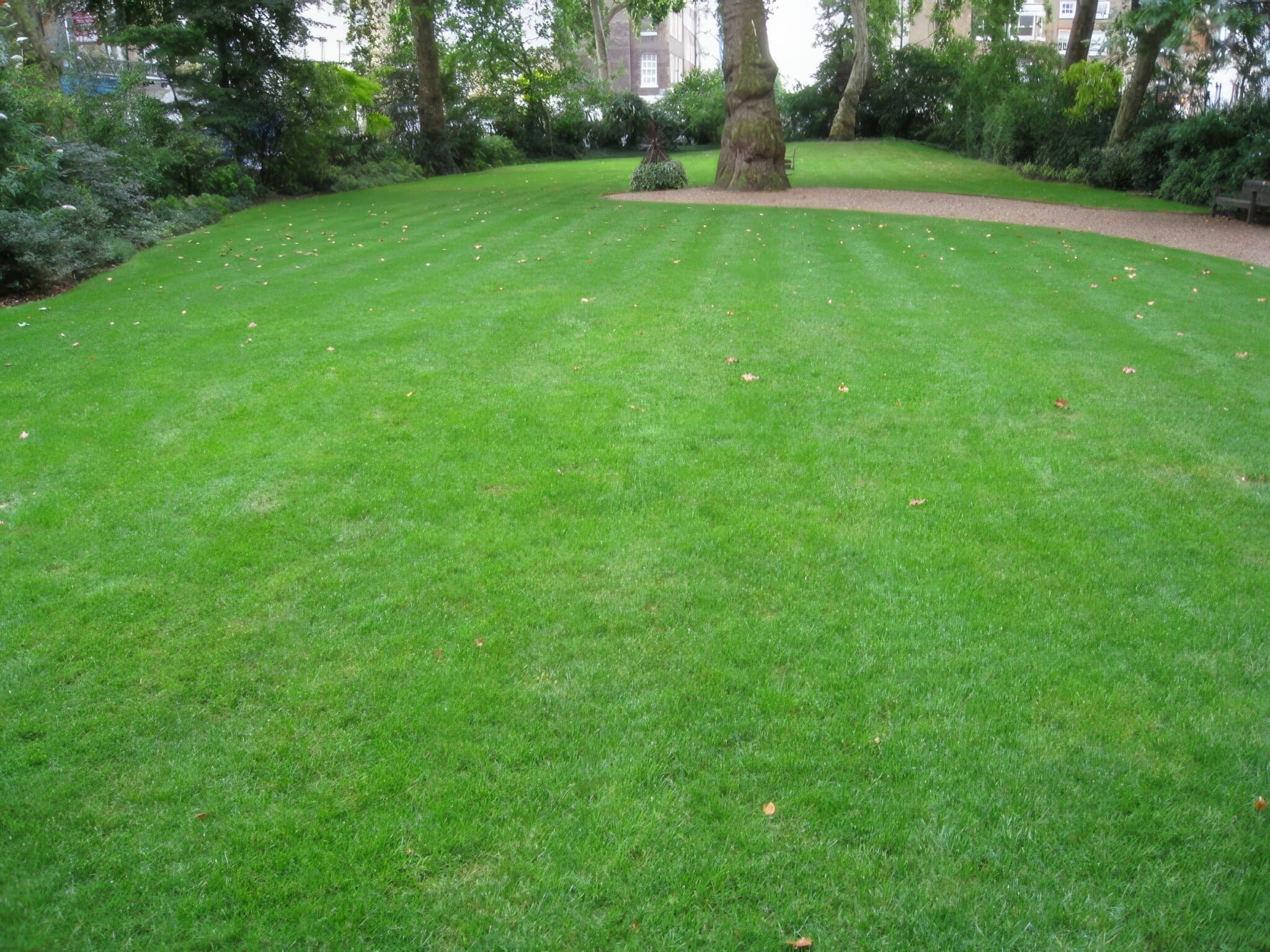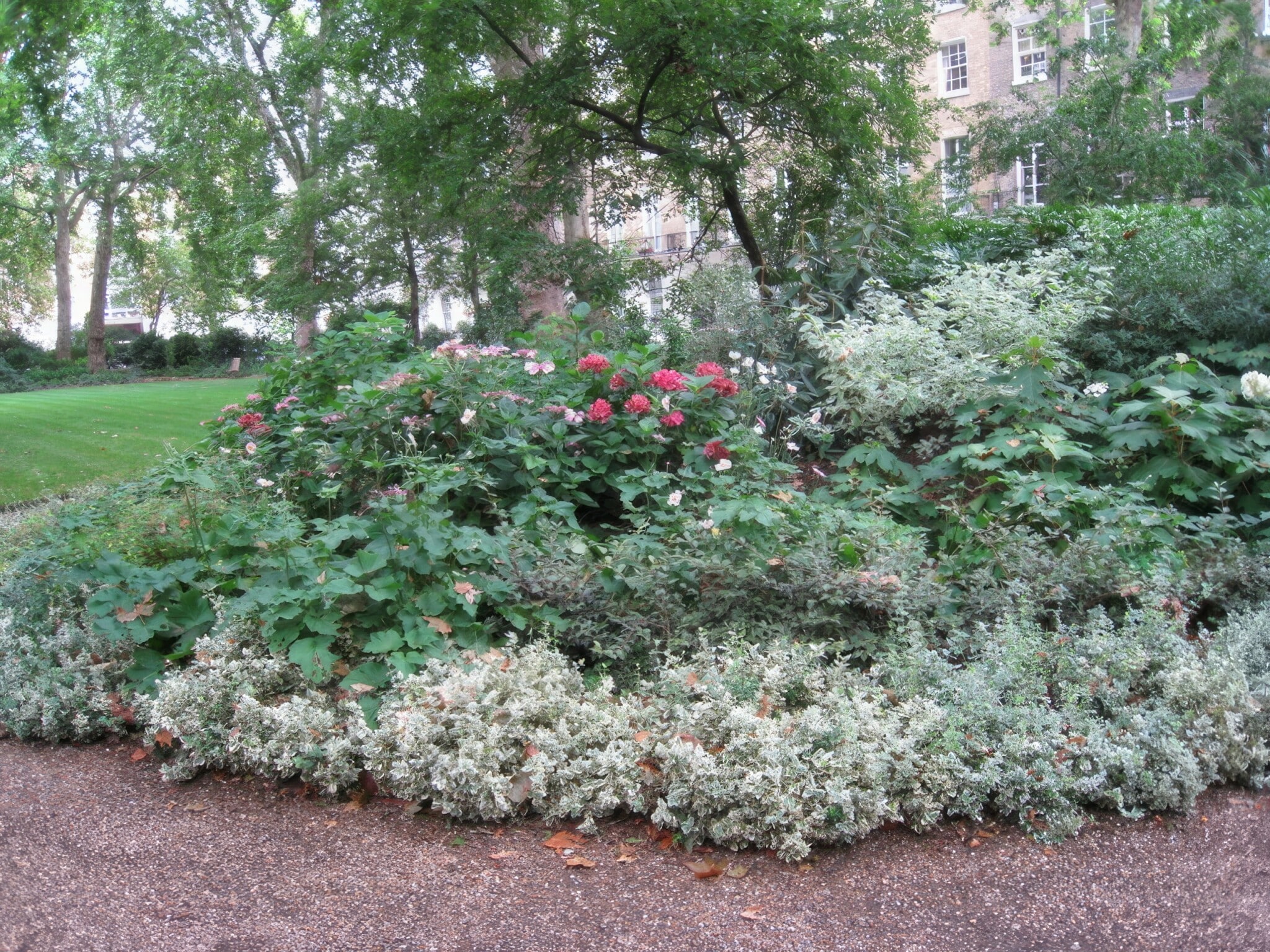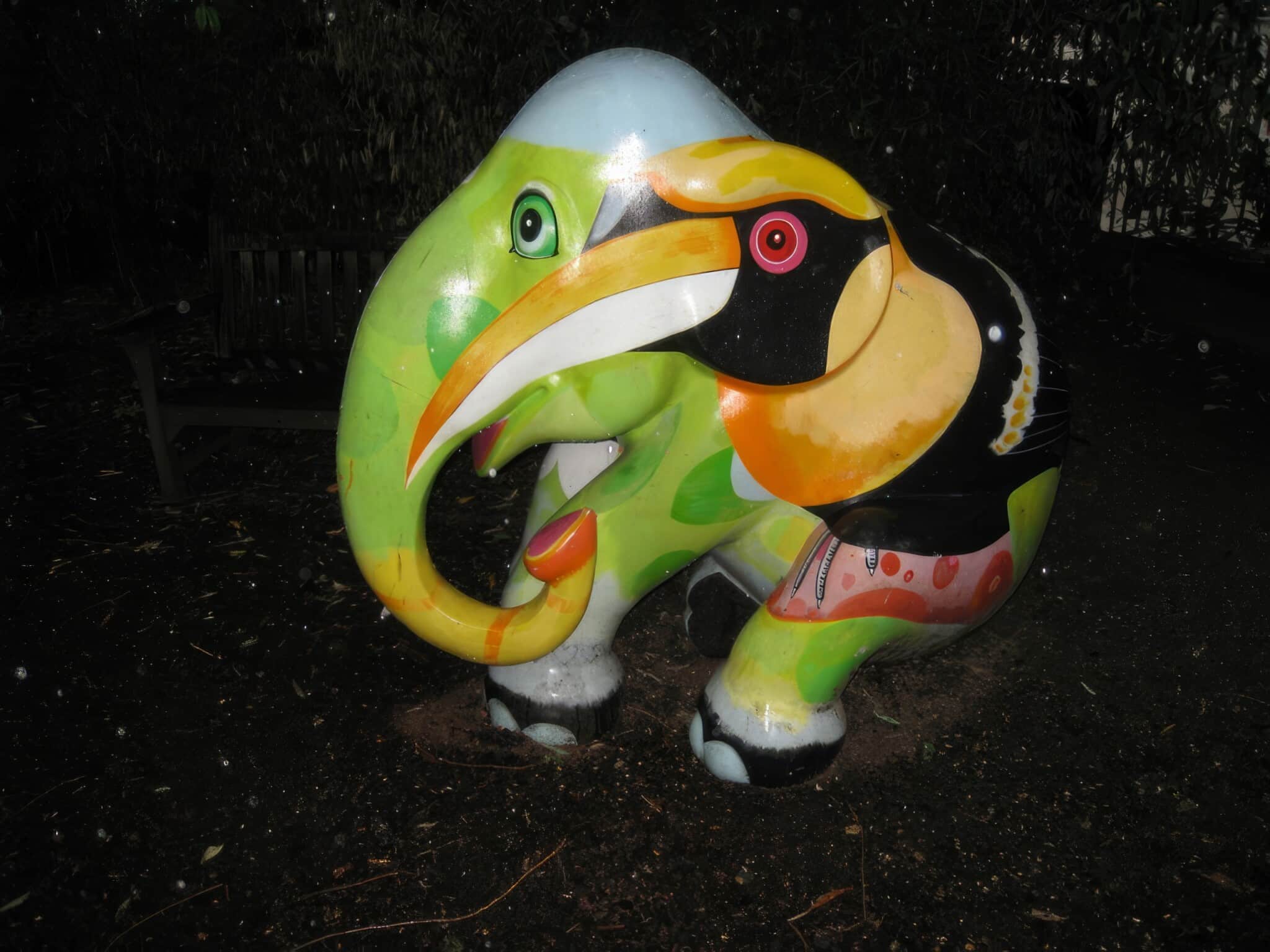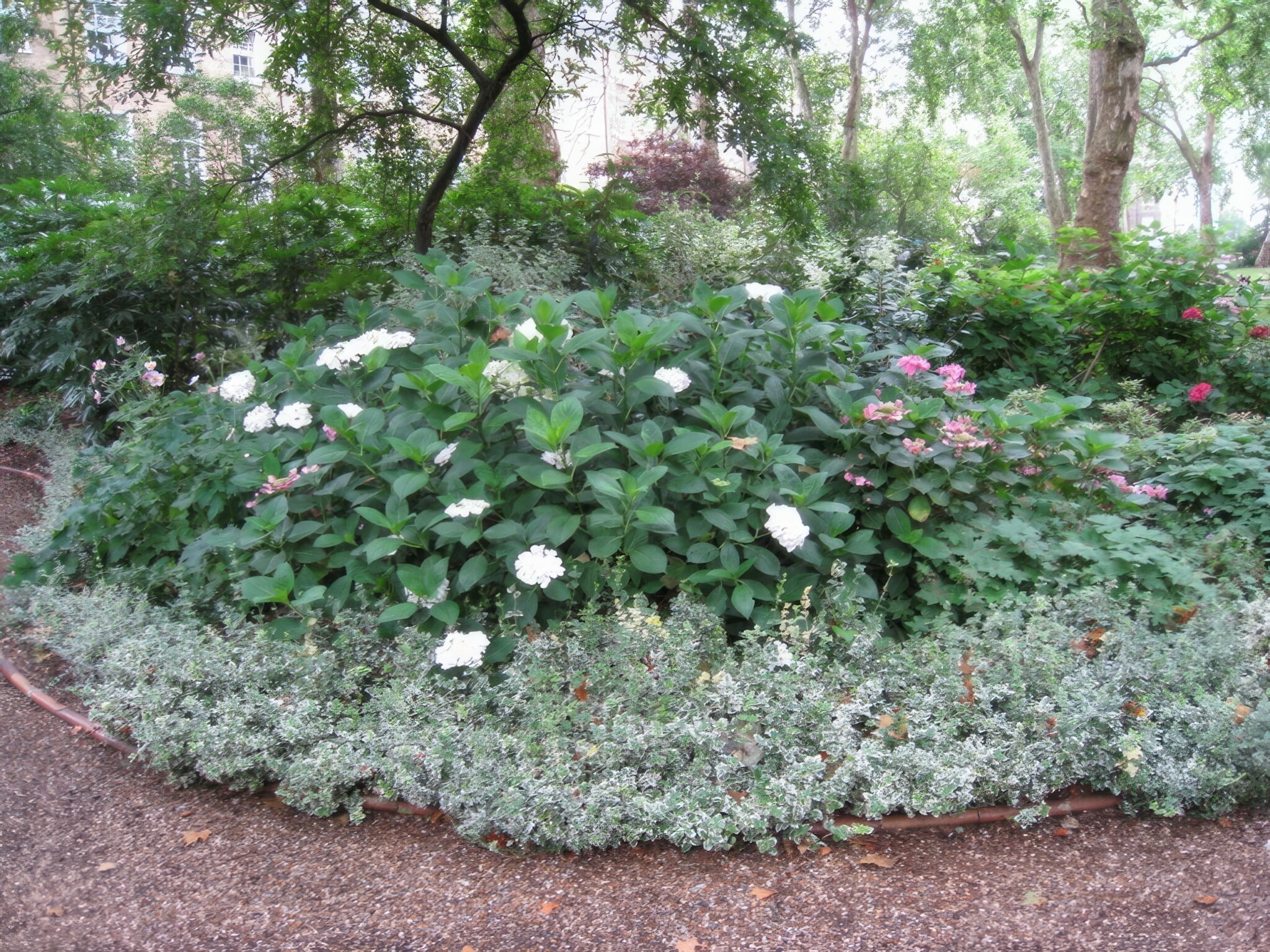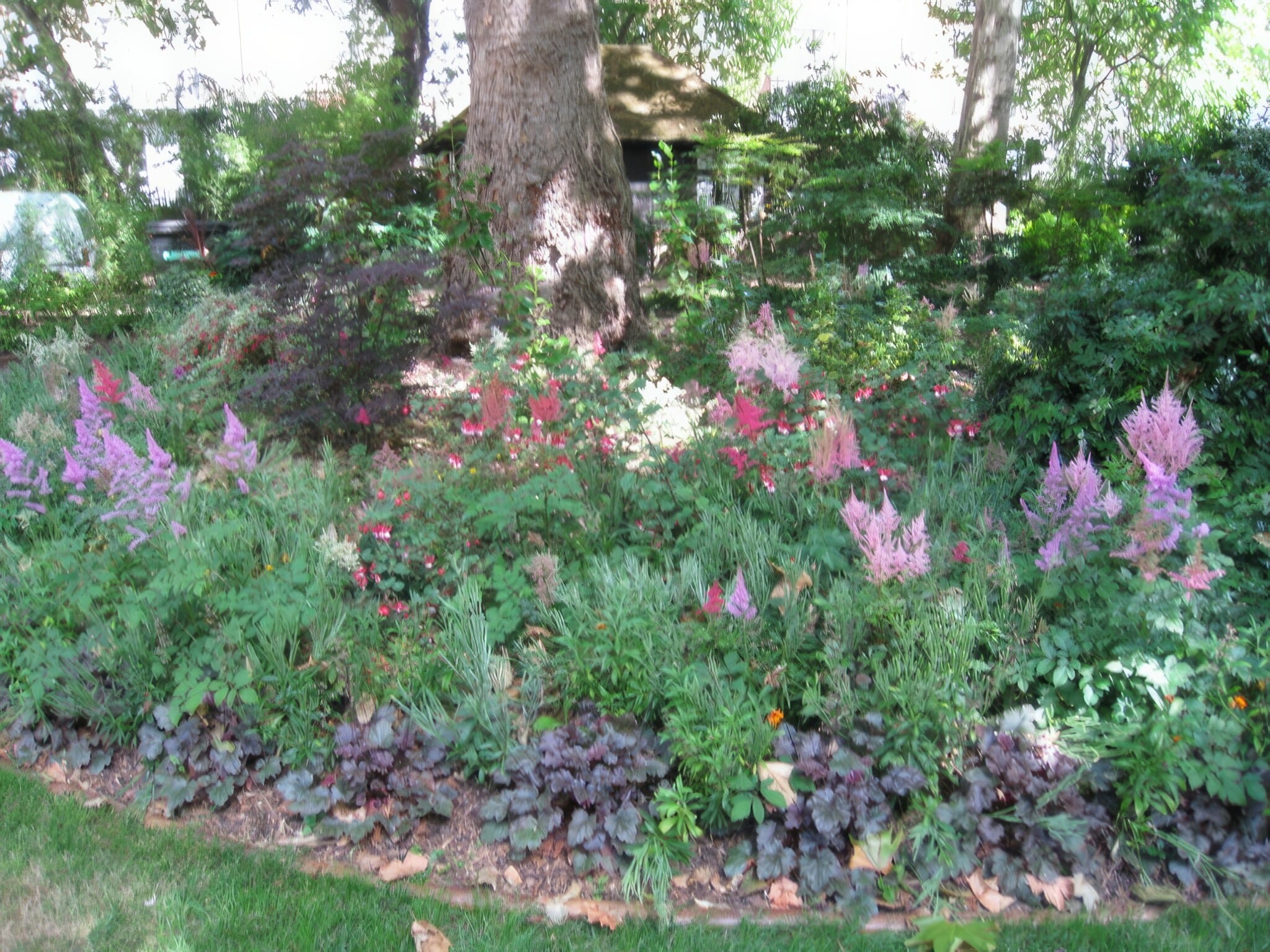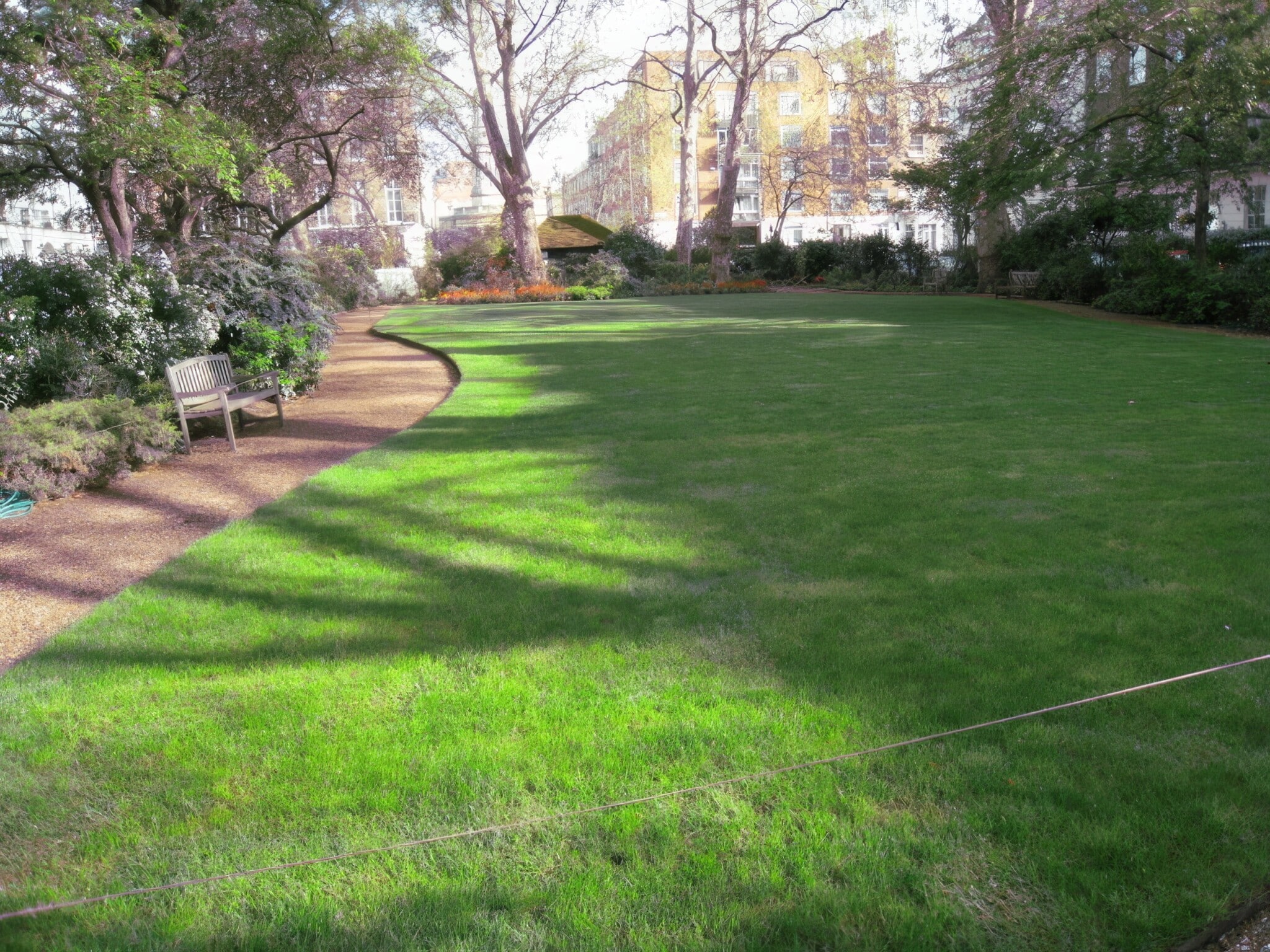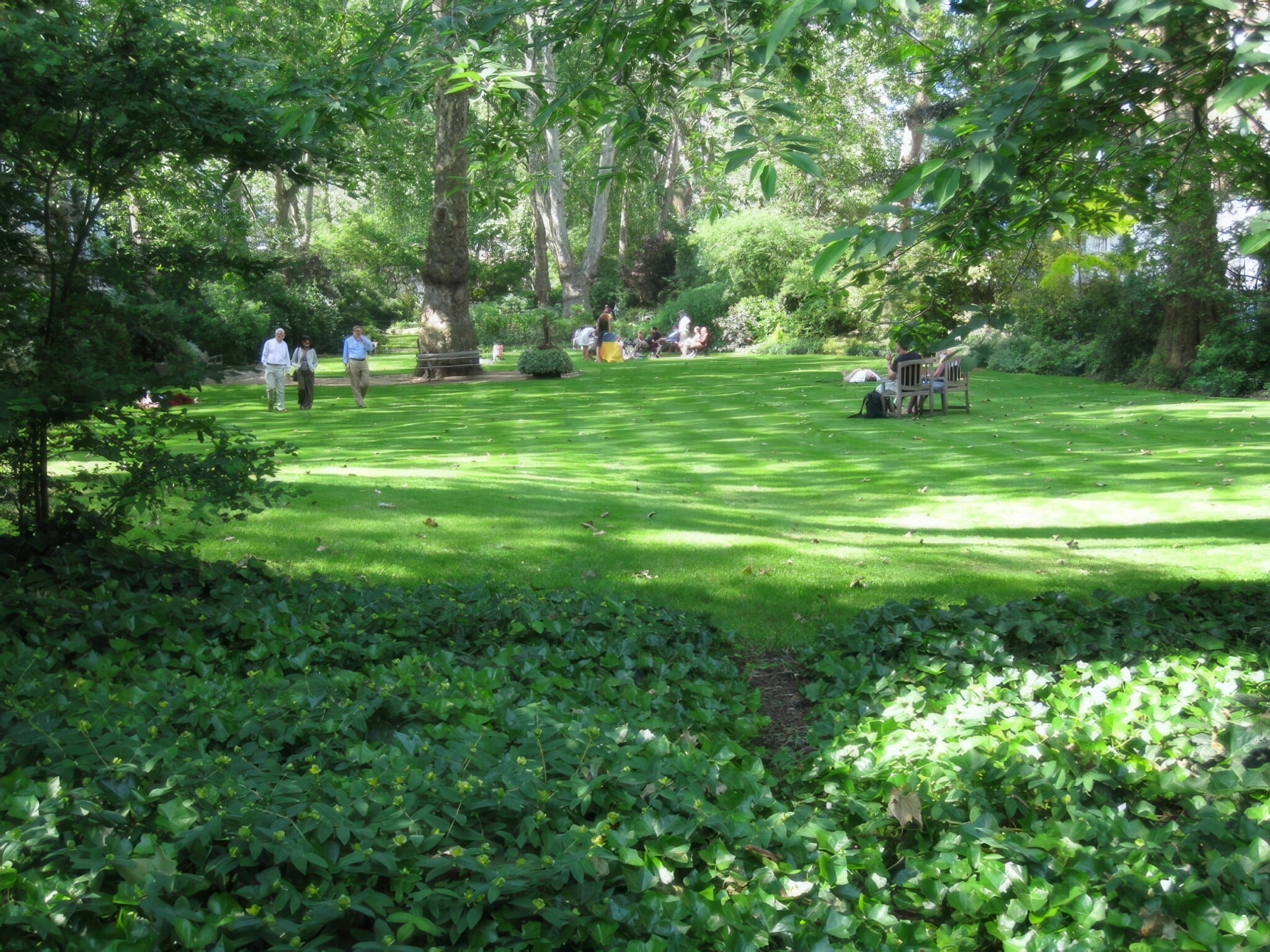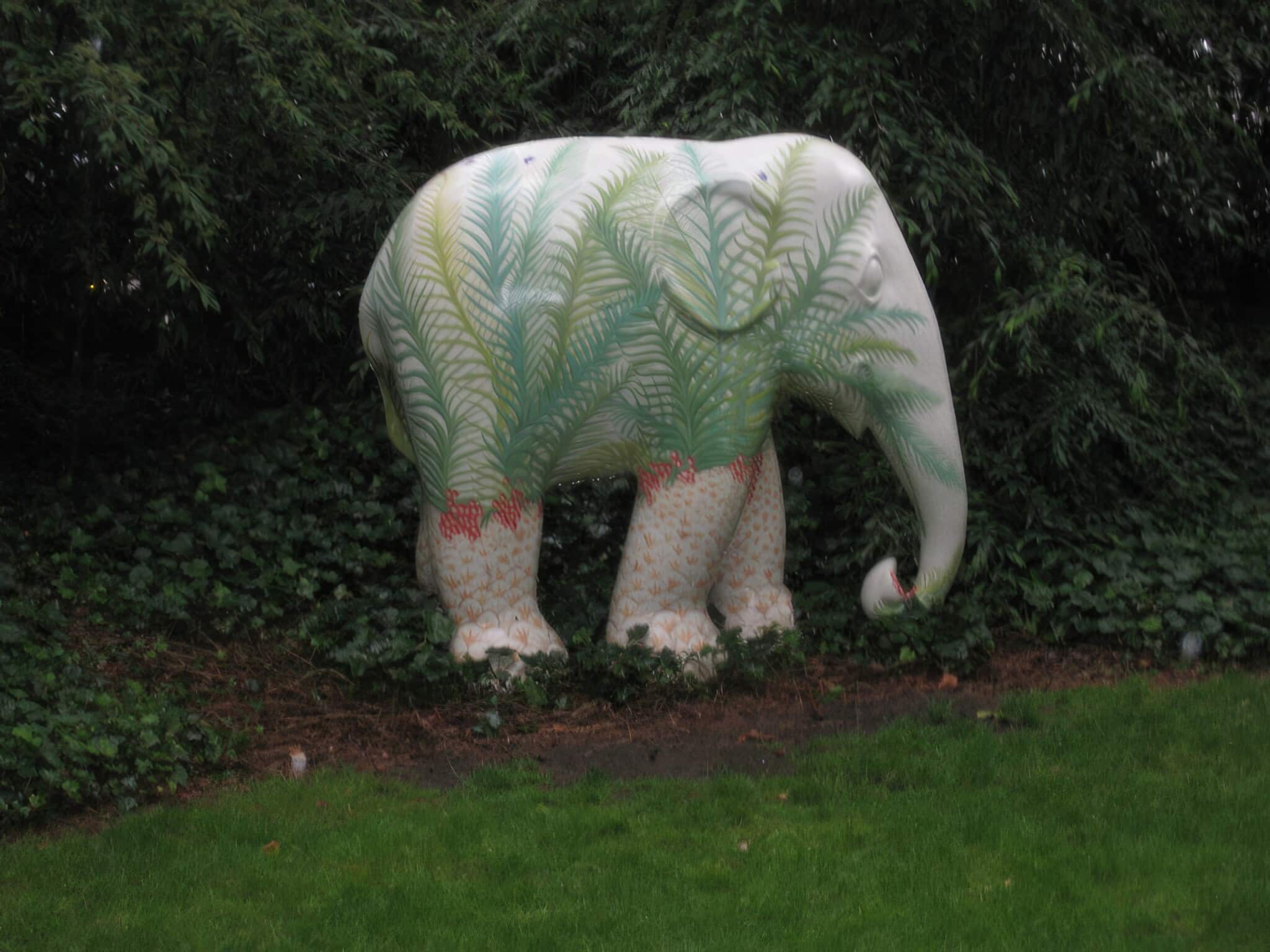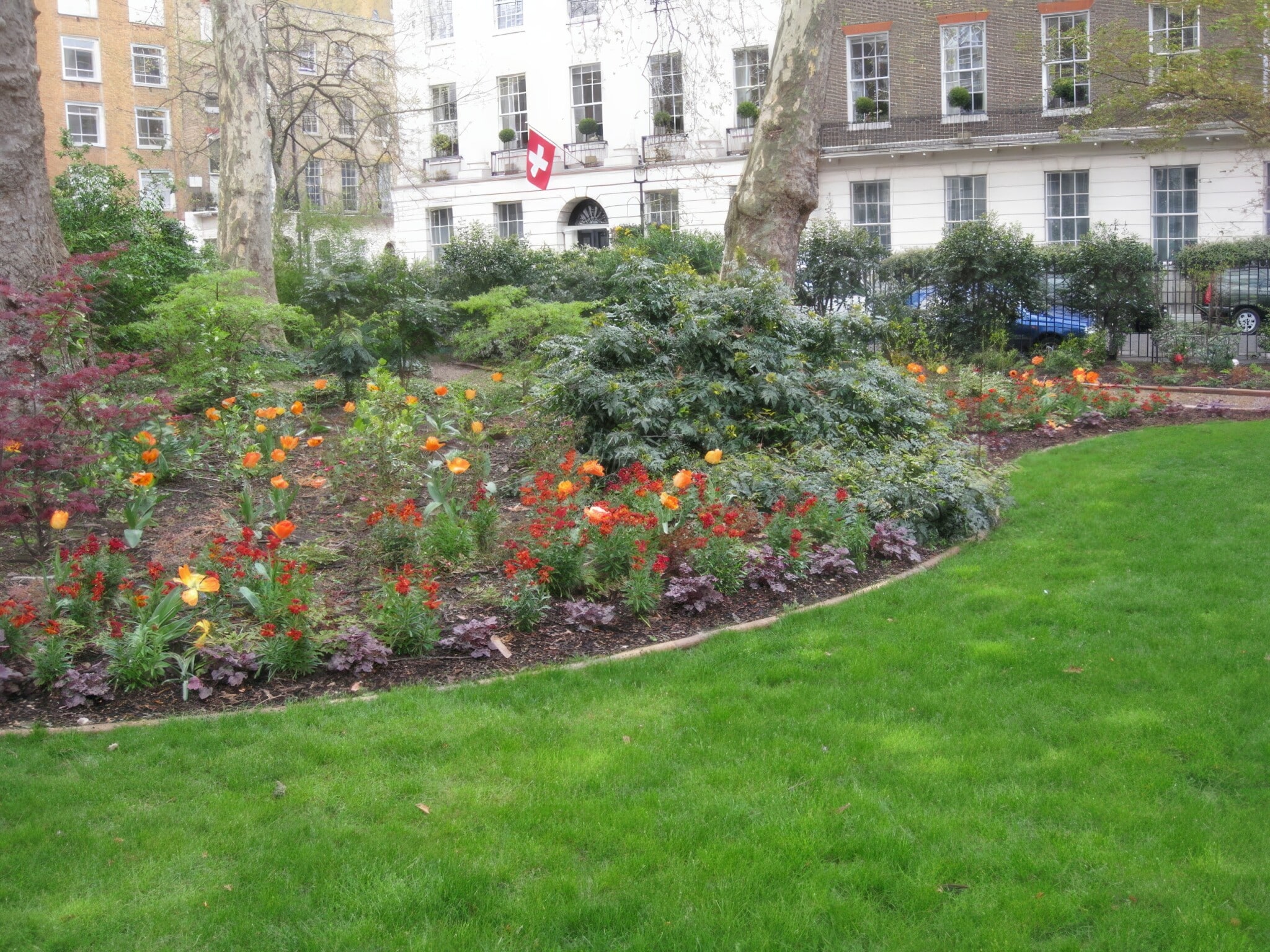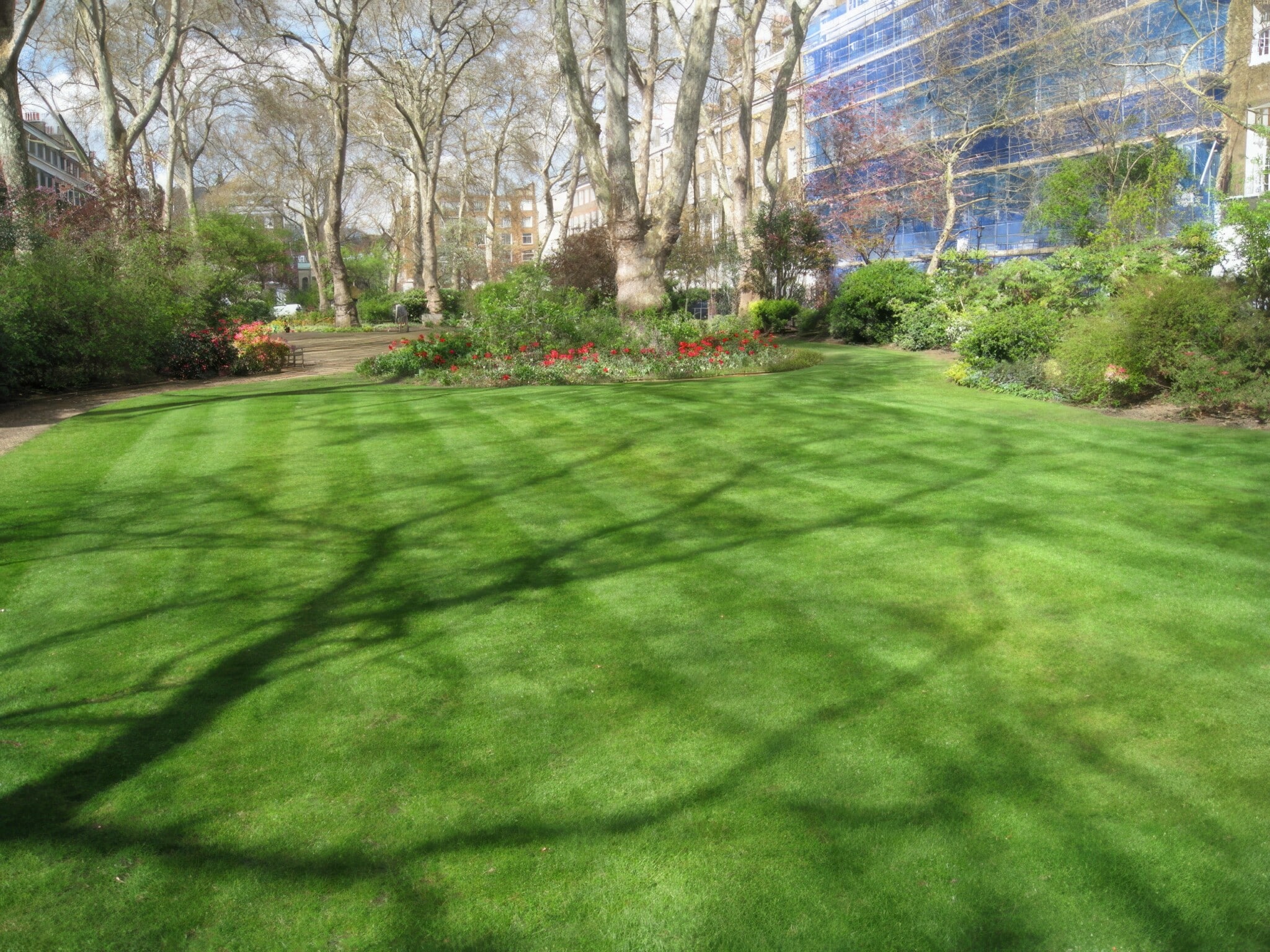Welcome to Bryanston Square Garden
Bryanston Square is located in Marylebone, a residential neighbourhood within the City of Westminster. In the Square, Georgian townhomes surround a garden, which is maintained by the Bryanston Square Trust for the exclusive enjoyment of private residents of Bryanston Square. The Garden is not accessible to the general public.
COUNTING
TREES
BUILDINGS
UNITS
Historic Bryanston Square
Bryanston Square is an early 19th-century garden square built on the Portman Estate. Montagu Square and Bryanston Square were the chief compositions of the estate between Gloucester Place and Edgware Road. The garden was provided for residents of surrounding houses. It retains notable London plane trees, mainly around the perimeter but also on the central lawn, and the path layout is recognisably descended from the original symmetrically undulating perimeter.
Bryanston Square and Montagu Square to the east were begun by the builder David Porter in c.1811 for the Portman Estate, designed by Joseph T Parkinson, District Surveyor of Westminster. Bryanston Square was completed in c.1821 and is named after the Portman family seat near Blandford in Dorset. Parkinson’s facades were designed to mirror each other, but have subsequently been altered; the north end of the east side has been rebuilt and the centre of the west side remodelled. Although mocked by Charles Knight in 1844 as `twin deformities…long narrow strips of ground, fenced in by two monotonous rows of flat houses’, Bryanston and Montagu were not, in fact, a pair. Bryanston is wider and plays a significant part in the surrounding townscape, being aligned as part of an axis with Marble Arch to the south and Wyndham Place to the north. Smirke’s St Mary’s Church, begun in 1823, situated at the northern end of Wyndham Place, acts as an eye-catcher, closing a long vista from Oxford Street through the square.
The garden was laid out in 1810 and was provided for the residents of the surrounding houses. It continues to be administered by a Trust set up by an Act of Parliament of 1813, which has a statutory obligation to maintain the garden and its surrounding railings, levying a rate for the purpose on the occupants of Bryanston Square. In 1928 the garden was described as ‘a long narrow enclosure surrounded by a thick shrubbery’ ‘laid out as lawns with some fine trees’.
Today the garden retains notable London plane trees, mainly around the perimeter but also on the central lawn, as shown on the OS Map of 1870. The trees now obscure the axial view from Marble Arch to St. Mary’s Church. The path layout is recognisably descended from the symmetrically undulating perimeter path illustrated in Potter’s Marylebone Survey of c.1832. The circular beds edged with C19th tiles appear to be vestiges of the original elements. The perimeter is planted sporadically with shrubs and perennials, but modern gardening is agreeably low-key. The dwarf weeping ash in the middle of the lawn, which Knight scorned as resembling `a gigantic umbrella or toad-stool’ has since gone. There are C19th edging tiles in places around the paths, and benches made in c.1954 from the timbers of Admiral Lord Jellicoe’s flagship. The square is railed, and contains a modest C20th timber-framed shelter; the original iron railings were removed in WWII and replaced with wire fencing, but new railings were restored in 1980. There are 34 London plane trees in the garden, about a third of which are survivals from the last quarter of the C19th. Other trees include cherry, malus, lilac, laburnum, false acacia and Japanese maple.
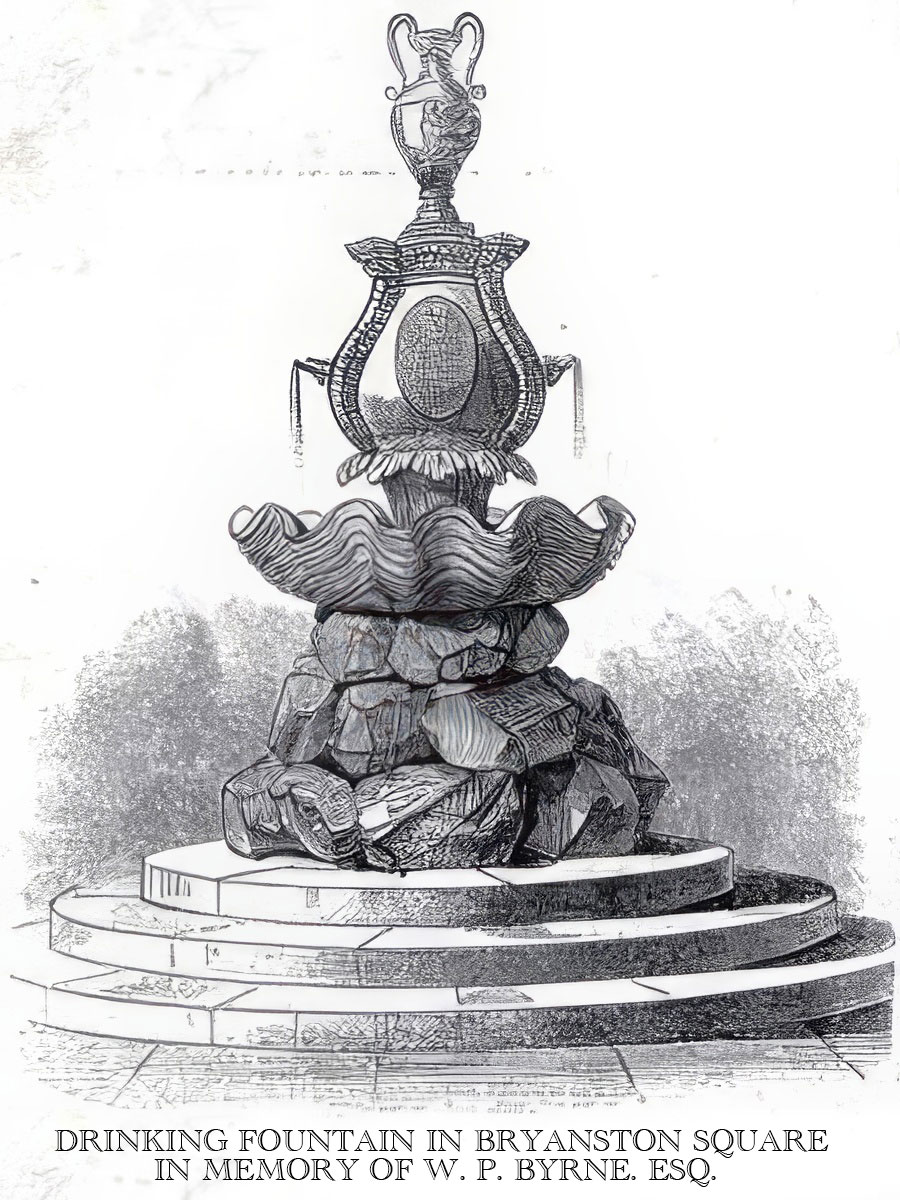
At the south end of the garden square stands a Grade II-listed memorial drinking fountain by William Pitt Byrne, erected in 1862/3. Pitt was the owner and editor of The Morning Post, which later merged with the Daily Telegraph in 1937. Made of painted stone, it consists of a heaped ‘rock’ rubble base to a shell basin from which rises the fountain proper consisting of an acanthus leaf plinth to a bombe-faced pedestal with angle consoles and a crowning urn finial. The drinking fountain was allowed to run dry at some point following its construction, as noted by the Evening Standard in 1974.
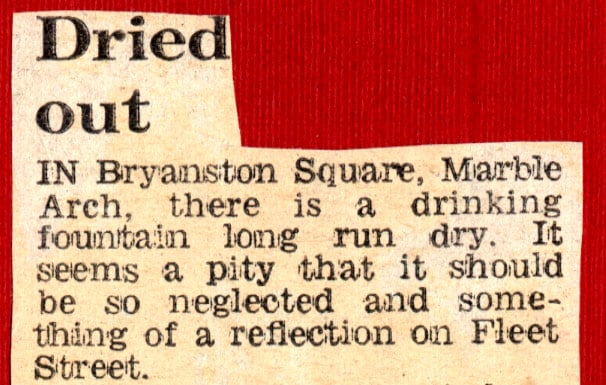
At the north end of the Garden stands a cast iron water pump in the form of a Doric column, also Grade II-listed, dating from the early C19th.
During WWI, convalescent hospitals were established at No 37 and at No 48, treating, in particular, patients from the Royal Flying Corps. The hospitals, established (separately) by Lady Tredegar and Lady Carnarvon, respectively, opened in 1916. King George V and Queen Mary visited the hospitals early in 1917.
During WWII, the St Marylebone Civil Defense Unit reported repeated incidents causing damage to buildings in and around Bryanston Square between September 1940 and September 1941. In WWII all property in the Square was requisitioned by the American Army and the garden became a parking lot for army vehicles. The First United States Army Group was headquartered in Bryanston Square as of 16 October 1943, followed by the American 12th Army Group, under the command of General Omar N. Bradley, at Nos 14-20 Bryanston Square. On 14 March 1944, the Headquarters at Nos 14-20 was attacked. In EAGLE XX: Twelfth Army Group, Brigadier General Charles A. Masson describes the event:
“One incident recalled was the last big German air raid when they set our head quarters on fire in March of ’44. I rushed around to try to save what I could of the plans, and, as I approached the entrance to my building. General Leven Allen stopped me and said, “Masson, you are just the man I want—you are in charge of the fire department and I don’t want the fire to get beyond No. 16 Bryanston Square.” Of course, this was General Bradley’s and General Allen’s office so it was my job to carry on. We had one small British pump and I called the British Fire Department twice for reinforcements and on the third call the voice on the other end said, “Look here, my good fellow, there are 350 fires in London tonight. We know where the important ones are and will get to you in due course. Good-night”; and the receiver clicked. Knowing I had had it and with the help of the one pump and stalwart work of many others with a stirrup pump, buckets, sand, etc. we were able to contain the fire and saved the General’s office.” (p 24)
Ultimately, the 2 centrepieces and north-east corner of the square were destroyed in WWII; the other 3 corner pavilions survive in a somewhat mutilated state. In July 1969 a 500-lb unexploded WWII bomb was found during excavations for the construction of the new Swiss Embassy and Consulate.
London Garden Squares
London Gardens Trust notes that “Squares are one of the defining features of London. Like other European cities, London has its grand civic spaces, but no other city has developed the garden square in quite the same way. London squares are different because they were built for people to live in. The layout of Georgian and Victorian squares created an ordered, spacious arrangement of streets and leafy open spaces which has made an enduring contribution to the quality of life in London.”
As specified by the London Squares Preservation Act of 1931, Bryanston Square Garden is protected as “an ornamental garden pleasure ground”. Relevant legislation and planning policies are summarised in Historic Parks and Gardens in Westminster published by the City of Westminster. An additional source of information regarding strategies, challenges, and services relevant to residential garden squares in London is Garden Square News, published twice annually with a mission to use its reporting to “enhance and defend” London’s communal gardens.
London Gardens Trust organises the annual London Open Gardens event, which offers public access over a summer weekend to over 100 secret and/or private gardens throughout London. Bryanston Square Gardens participates in London Open Gardens, with residents volunteering to welcome visitors to our Garden and share its history.
FAQs
Picnics of groups smaller than 10 persons are permitted, however BBQs and music are prohibited and care must be taken to ensure absolutely no mess is left behind.
With the exception of guide dogs for the physically impaired, absolutely no dogs are permitted in the Square.
All events must be approved by Westbourne Block Management and subject to a hire agreement.
For a PDF document of rubbish and recycling collection and information on street cleaning, please click here.
To obtain one you must apply to Westbourne Block Management. Contact details can be found at the bottom of your screen.
Garden Gallery
Historic Photos
The Library of 24 Bryanston Square, 1912.
The Ballroom of 38 Bryanston Square, 1908.
The Study of 18 Bryanston Square, 1913.
